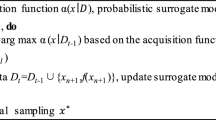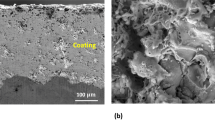Abstract
In line with the environmental protection trends of the 21st century, bamboo charcoal fiber is invented to meet the requirements of the fields of science and technology. Its special functionalities, namely, antistatic, moisture adsorptive, perspiring, antibacterial, deodorizing, anti-radiation, and far infrared properties make it extremely suitable for applications in medicine, sports, and recreational fields, as well as an important breakthrough for environmentally-friendly textile materials. To achieve rapid manufacturing, this study processes bamboo charcoal fibers by open-end (OE) rotor spinning. The Taguchi orthogonal array is applied to the design of this experiment, and the significant factors of fibers quality are obtained through ANOVA in order to facilitate the follow-up processes of quality control. The process prediction system is built based on the test data, and is combined with the back-propagation neural network and the Levenberg-Marquardt (LM) algorithm in order to establish an OE rotor spinning process prediction system. The rotor speed, feed speed, and winding speed are set as the network input parameters, while the yarn strength, the hairiness, the unevenness, and the imperfections indicator (I.P.I.) are the output parameters. Through network learning and training, this system reports a prediction error below 5 %, proving that this prediction system has excellent predictability.
Similar content being viewed by others
References
C. I. Su and X. R. Lin, Fiber. Polym., 10, 822 (2010).
O. Demiryürek and E. Koç, Fiber. Polym., 10, 694 (2009).
C. F. J. Kuo and T. L. Su, Fiber. Polym., 7, 404 (2006).
C. F. J. Kuo, T. L. Su, and C. P. Tsai, Fiber. Polym., 8, 654 (2010).
C. F. J. Kuo, T. L. Su, C. H. Chiu, and C. P. Tsai, Fiber. Polym., 8, 66 (2007).
M. D. Jean, C. D. Liu, and J. T. Wang, Applied Surface Science, 245, 290 (2005).
J. Fan and J. Pan, Appl. Math. Comput., 207, 351 (2009).
C. Ma, Appl. Math. Comput., 206, 133 (2009).
J. Zhao and F. Wang, Journal of Materials Processing Technology, 166, 387 (2005).
V. Singh, I. Gupta, and H. O. Gupta, Engineering Applications of Artificial Intelligence, 20, 249 (2007).
B. G. Kermani, S. S. Schiffman, and H. T. Nagle, Sensors and Actuators B: Chemical, 110, 13 (2005).
C. F. J. Kuo, T. L. Su, and Y. J. Huang, Fiber. Polym., 8, 529 (2007).
C. F. J. Kuo, T. L. Su, C. D. Chang, and C. H. Lee, Fiber. Polym., 9, 768 (2008).
C. F. J. Kuo, C. D. Chang, T. L. Su, and C. H. Lee, Fiber. Polym., 10, 394 (2009).
Author information
Authors and Affiliations
Corresponding author
Rights and permissions
About this article
Cite this article
Su, TL., Kuo, CF.J. & Wei, HJ. Prediction system of open-end rotor spinning process based on LM-neural network for bamboo charcoal fibers. Fibers Polym 12, 657–663 (2011). https://doi.org/10.1007/s12221-011-0657-4
Received:
Revised:
Accepted:
Published:
Issue Date:
DOI: https://doi.org/10.1007/s12221-011-0657-4




